Why we ran it: To see if Ssangyong’s first EV could stand out among a slew of reputable rivals – and show that the firm has a future
Month 3 - Month 2 - Month 1 - Specs
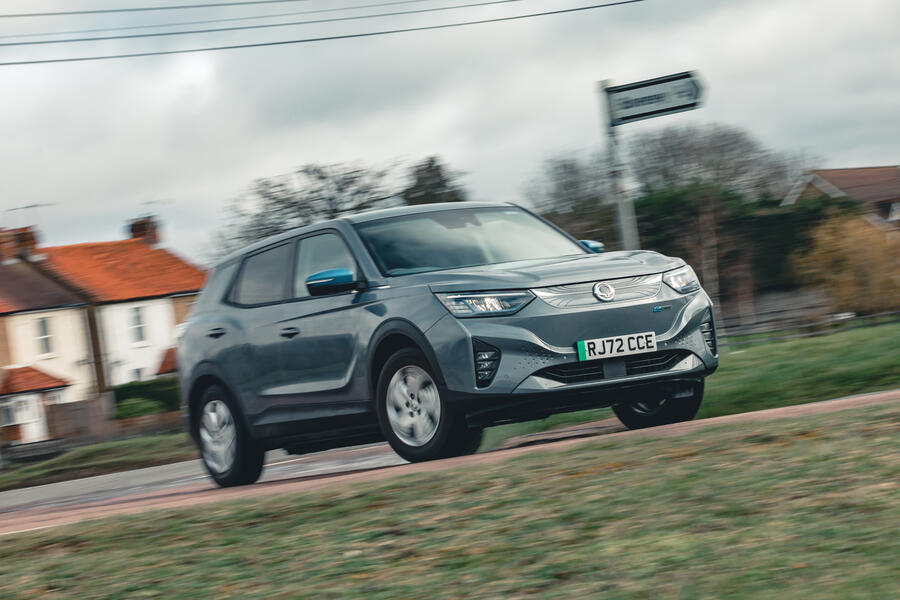
Life with a Ssangyong Korando E-Motino: Month 3
The verdict on this E-Motion electric SUV is in after its 7000-mile real-world test - 7 June 2023
When I first received the keys to the Korando, my expectations weren’t exactly sky high. That’s because my own perception of Ssangyong had been tarnished by its history of unsightly machines with little driving ability. (Remember the Ssangyong Rodius?)
So has Ssangyong finally built a car that people might be excited buy? Yes – and no. The Korando E-Motion is a far cry from the Korando of old and is a decidedly more capable and agreeable car than any previous Ssangyong.
Its powertrain is acceptable and that 0-62mph time of around 8.0sec is quick enough – despite being down on several rivals such as the Kia Niro EV and the MG 4 EV. It’s comfortable too. I enjoyed the electrically adjustable leather seats, particularly as they could be heated or cooled, and it was easy to find a driving position that suited me.
The Korando also rode well on most surfaces and my passengers rarely had any complaints. Again, the interior was pretty impressive and solid, and there were buttons galore so I was able to quickly change the climate control temperature, switch off the incredibly annoying lane keeping assistance and control more besides with a single press.
Plus, the boot and cabin had all the space to support me during my house move, easily accommodating all my boxes and other rubbish I lugged to my new home in London.
Despite these important positives, though, I don’t think the Korando does enough to stand out in this range-topping specification, especially when you consider its near-£40,000 price, even with the huge amount of equipment that’s included as standard.
I wasn’t initially enamoured with its appearance either. Although this fourth-generation Korando is a far better-looking SUV than its predecessors, it took a while to win me over. It lacks a sense of character present in other EVs such as the MG 4 and Ora Funky Cat – both inside and out – although the blue trim for this electric variant contrasts nicely with our car’s grey exterior paint, its only optional extra (at a cost of £500).
Issues appeared when driving it too, some of them related to the car’s build quality. I’ve mentioned in previous reports a charging flap problem that resulted in me spending six hours in an Ikea car park. Other issues included an occasional loud bang from roughly around the left rear wheel. I never got it diagnosed but I suspect it was suspension-related because insignificant potholes. Then there was the radio, which would change stations all by itself at random.
Road noise was fairly pronounced at higher speeds and wind noise was far worse. However, I often stayed below 65mph anyway, as the bonnet would flex slightly at motorway speeds. A bit of chrome trim had started to rust too.
But the biggest issue by a mile was the incessant beeping, as news editor Felix Page pointed out when he compared my car with his Funky Cat (Autocar, 26 April). I must have delved into the Korando’s infotainment menu to turn off all of the driver assistance equipment five or six times, just to stop the constant beeping. The biggest culprit, I think, was the speed camera warning alert, which would go off despite there not being one within 10 miles. It could make driving really quite stressful.
The car was efficient, though. Ssangyong advertises the Korando E-Motion with around 215 miles of range, and the best I managed from the model’s 61.5kWh battery was 202 miles. On most drives to work, over a mix of B-road, motorway and stop/start high-street traffic, I recorded around 3.2mpkWh, for an average range of 177 miles.
However, I spent much of my Korando ownership feeling like I’d lost a lifelong friend. My move to London meant I no longer enjoyed the incredible convenience of a home charger, and those still-enticing late-night, low-cost energy tariffs. Instead, I’d routinely find a fast charger in London or on the motorway that would cost around £20 for less than half the battery’s worth of range, and I’d rarely get the advertised charging speed – although this seemed more of an issue with the infrastructure than the car. I even had a 150kW charger drop as low as 10kW in some cases.
Ultimately, it’s hard to fully recommend the Korando – sales of which are currently paused in the UK while Ssangyong resolves supply issues – as a go-to EV purchase when the market is full of capable options. But I’d say the £32,695 ELX is a more attractive buy than our range-topper, given you still get a reversing camera, Apple CarPlay and Android Auto, dual-zone climate control and LED headlights.
It’s outclassed in drivability, comfort and build quality by the majority of its rivals. But for all that, this marks a promising step in the right direction for Ssangyong.
Second Opinion
It’s never going to be the obvious choice, but the electric Korando warrants consideration simply for being pretty darn good value for money. Enough poke, a decent range, quick-ish charging and a big boot – all for the price of many cars that can’t lay claim to much of that.
Felix Page
Love it:
Electric motor's urge It was punchy and quick in most scenarios and took several drivers by surprise at the traffic lights.
Do-it-all seating The seats were comfy, but add in electric adjustment, ventilation and heating and they were hard to beat.
Fill it up The Korando’s boot space is decent for the class, and it really helped me during my house move.
Loathe it:
A beeping nuisance Use the in-built sat-nav and you will have to deal with endless anger-inducing beeping and bonging.
Build quality concerns I took issue with the floppy bonnet, charge flap problems and rusted chrome trim.
Final mileage: 7484
Life with a Ssangyong Korando E-Motion: Month 2
If you can hook up, it’s not so much plug ’n’ play as plug ’n’ pay – through the nose - 24 May
My exploration of the UK’s charging network has included visits to several speedy charging stations across London and various motorway service stations over the past month. I’m slowly starting to build a picture of which chargers are most effective, as well as those I’d rather avoid. I’ve had good experiences at Gridserve chargers, which have almost always operated at consistently high speeds.
So sticking with Gridserve for my stops has worked out well so far, save for approaching the occasional bagged-up charger, although I’ve yet to visit one of those posh electric forecourts. I’ve also had good experiences with Ionity and Instavolt, which, when working, are almost always as fast as advertised.
However, I’ve noticed over the past few months that many chargers I’ve visited really fall short in terms of accessibility. I encountered a Shell charger where the cables would not reach round to the Korando’s charging port, as the charger itself was positioned into a corner next to a brick wall.
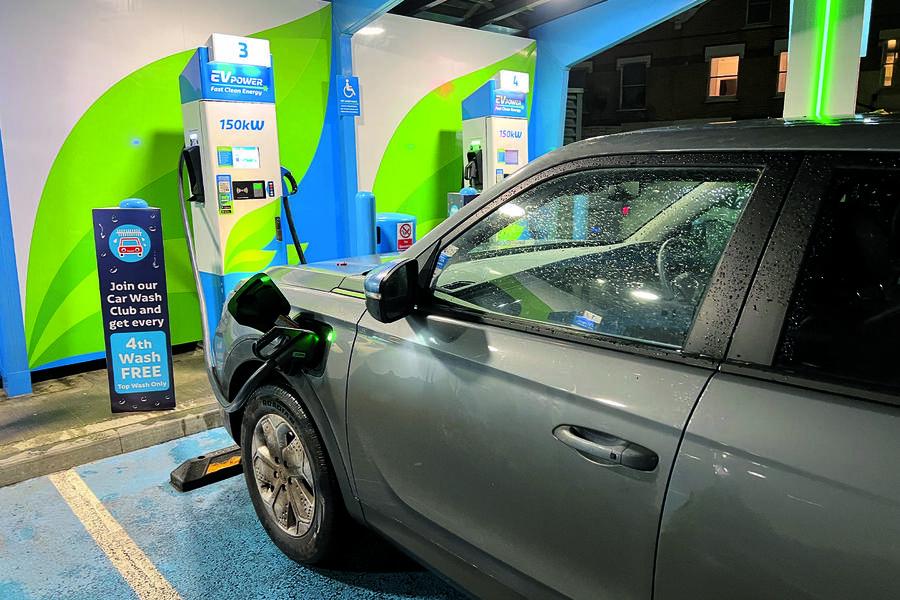
Many other chargers I’ve come across are positioned on kerbs with poor-quality screens that are far too high to be read by many drivers, but a bigger issue is the sheer weight of the cables. It’s not that much of a problem for me per se, but I’m often caught off guard by how heavy some of the faster charging cables can be.
Dragging these cables, which are often extremely short, around your car is certainly much more strenuous than filling up with conventional fuel – and from my recent experience not much cheaper either. The Korando E-Motion doesn’t have a particularly big battery (61.5kWh) but even a short charge of around 30kWh via a public unit sets me back around £20.
In fact, I stopped to charge at a McDonald’s during a recent trip to what might be the least likely habitat for a Korando (Silverstone circuit, if you’re wondering) to use an Instavolt fast charger. The pit stop took 32 minutes and added around 27kWh worth of charge – equivalent to around 80 miles given my 3.1mpkWh consumption. Cost: £20.47. Ouch. That’s 75 pence per kWh, and my bank manager is quivering with fear.
Reversing camera
The Korando’s reversing camera gives a good view of the surroundings and is a nice partner for the SUV’s parking sensors.
Wheel design
I still can’t bring myself to like that silver wheel design. It feels like almost any other treatment would have looked better
Mileage: 5990
A plush interior is let down by lacklustre ergonomics - 17 May
Our E-Motion’s interior is generally solid and nicely put together, but the gear selector can be frustrating. Sometimes it won’t register an input at all, meaning I have to yank it down multiple times to go from reverse to drive. I do, however, like how large it is, compared with Stellantis’s tiny selectors or the strange twisting thing in VW and Cupra EVs
Mileage: 4663
Charging pad is a bit of a dud - 10 May
The Korando E-Motion’s wireless phone charging pad, which is part of Ultimate specification, is proving problematic. Charging seems to cut out after a few minutes no matter how full my phone’s battery is, so I don’t bother using it any more. It’s much better to plug it in directly so that I can access Apple CarPlay anyway.
Mileage: 3543
Charging network could do better – as could those who use it - 3 May
My experience of charging the Ssangyong Korando E-Motion has been a mixed bag so far.
There’s an Ultracharge device on the street outside my London apartment complex that, at 50kW, is extremely useful for a quick hour’s worth of charging. However, sometimes it cuts out midway through a charge, due to a machine failure, otherwise it will proceed without issue. I’ve also walked past several times to see that it has switched off or is displaying an error screen. On another occasion, it wouldn’t release my cable, so I had to use the emergency stop switch.
But that’s where my complaints about the chargers themselves end and where those about the people who use them begin.
I’ve learned to be patient when I charge, particularly having spent almost seven hours in an Ikea car park last month, stemming from an issue with the Korando. But many drivers appear to be in rather more of a rush. In fact, most times I’ve charged the car, I’ve encountered some sort of conflict or frustration.
One example involved a driver hammering the horn of his Nissan Leaf at a woman who had simply returned to her plugged-in Kia e-Niro to pack away her shopping. Another saw a taxi driver tapping on my window asking me to move out of the way, even though I was clearly parked and charging. And exactly half of my public charging trips (yes, I’ve been keeping count) have involved drivers standing by my car staring in to see how much charge is remaining or fiddling with the machine to see how long is left until they can have it for themselves.
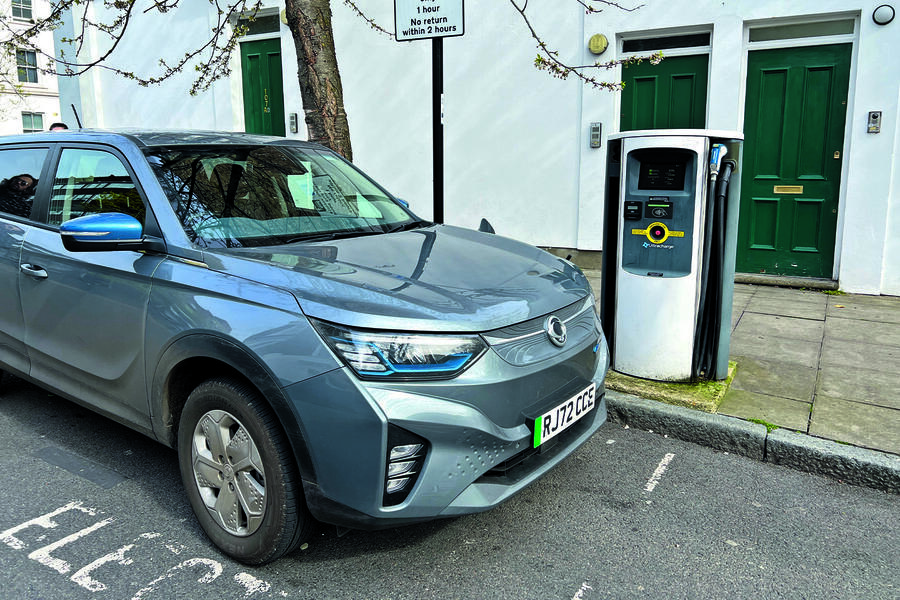
I get there are shortcomings with the infrastructure, but intimidating other drivers won’t help overcome them. We’re all dealing with the same number of faulty, slow and congested chargers, after all, and we all have places we would rather be than sitting at the side of the road charging or waiting to do so.
The stress of having some nosey stranger invading my personal space has made me really miss having my own charger at home. But it has also made me appreciate the calming atmosphere of the Korando. It may not be an exciting car to drive, but I always get in and am thankful for the soft leather seats, heated steering wheel and other comforting equipment.
It’s an easygoing car, this Ssangyong. The average 177 miles of range that I’m getting at present is more than enough for me, so my range anxiety has abated. I can reliably shove all of my stuff in the boot and there’s enough rear space for three adult passengers.
One thing I’m not sold on is the styling. It’s far more handsome than the previous Korando, granted, but it’s still hardly a looker. If I were in the market for a similarly priced electric SUV, a Kia Niro EV or a Hyundai Kona would catch my eye first. Looks alone might not be a deal-breaker but they’re more important on a car whose badge many will not recognise.
Like it
Buttoned up
It’s refreshing to be able to control the heated seats and lane-keeping assistance with the tap of a button.
Loathe it
Is it the 1970s?
A bit of chrome trim has started to rust, which doesn’t bode well after fewer than 3000 miles.
Mileage: 2847
Life with a Ssangyong Korando E-Motion: Month 1
We got far more than we expected on a trip to Ikea - 19 April
My first week of living in London has been full of ups and downs. Quite literally, in fact, as I’ve moved to one of the capital’s most hilly areas, which is testing for my Korando E-Motion in several ways.
I find the Ssangyong EV really rather pleasant to drive in the city. The ride isn’t the plushest in the class, but it’s quiet, driving at slow speeds is an effortless task and, despite its size, it never feels too big to squeeze past an oncoming bus or during a quick parallel park.
The most comfortable method of driving the Korando is switching it into Eco mode (or Eco Plus, if I’m feeling extra stingy), which improves efficiency and places a soft limit on the crossover’s top speed of 55mph, and engaging level-two regenerative braking.
It’s not quite a one-pedal-driving situation, but it’s definitely handy for saving a bit of energy in stop-start traffic.
So, most things seem positive. Well, then let me tell you about a recent trip to Ikea Wembley, where our honeymoon period came to an abrupt end.
With three empty Gridserve chargers at my disposal, all with an output of 50kW, I had the pick of the lot. I smugly plugged in and went on my way, hoping the dismal 11kW charging rate displayed on the screen would improve as the Korando’s battery warmed up.
An hour or so later (perhaps a record for rounding that shop), I came back to find that the battery had gained only around 30 miles’ worth of energy. And when I then unplugged it, I was presented with an error message on the dashboard stating there was an issue with the power supply and it was unable to shift into drive or reverse.
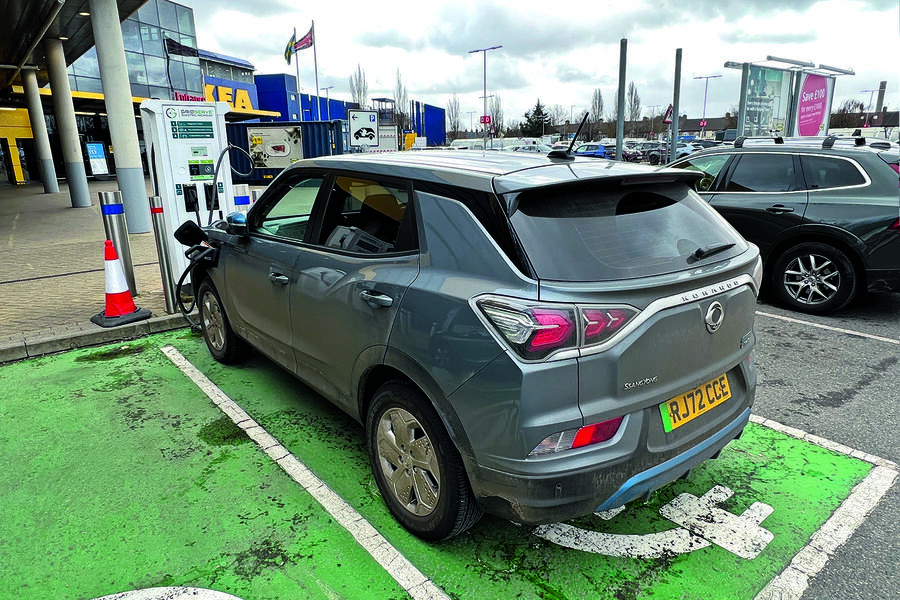
I had seen this message before, but a restart solved the problem. Not today. After five minutes of deliberating, a grumpy van driver tapped on my window, saying he had been waiting an hour for a charger and asking me to leave.
Luckily, I was able to shift into neutral, and I pushed the Korando out of the way so he could charge his Maxus eDeliver 3 and get out of the way of other miffed EV drivers.
After a call with Ssangyong, who asked me to disconnect the battery (which I was unable to do because I had no tools with me), I called for assistance. The RAC didn’t arrive for another three hours after this debacle, meaning I sat in the Ikea car park for six hours in total.
It turned out it was an issue with the charging flap, according to my saviour dressed in orange, which was fixed after some fiddling around under the bonnet.
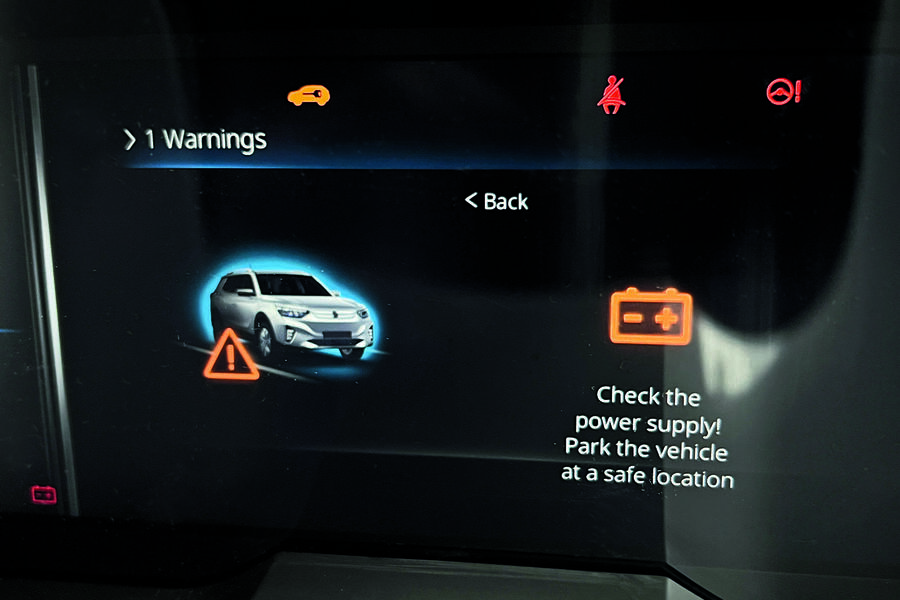
The flap now doesn’t quite close properly, so I will have to keep an eye on it and hope the problem doesn’t occur again.
I haven’t had any troubles since, but it was a huge inconvenience to myself and to my fellow EV drivers. Not only that but I was also charged £9.43 for the privilege – and for a measly 14kWh top-up.
But hey, at least I’m stocked up on rugs, curtains and Djungelskogs.
Like it
Hot and cold
The front seats are both heated and ventilated, meaning I can warm up on a chilly evening or cool down after a game of football.
Loathe it
Absolute pain
The radio has a mind of its own, changing between stations almost at random without any driver input.
Mileage: 2244
Moving day for our Ssangyong owner - 12 April
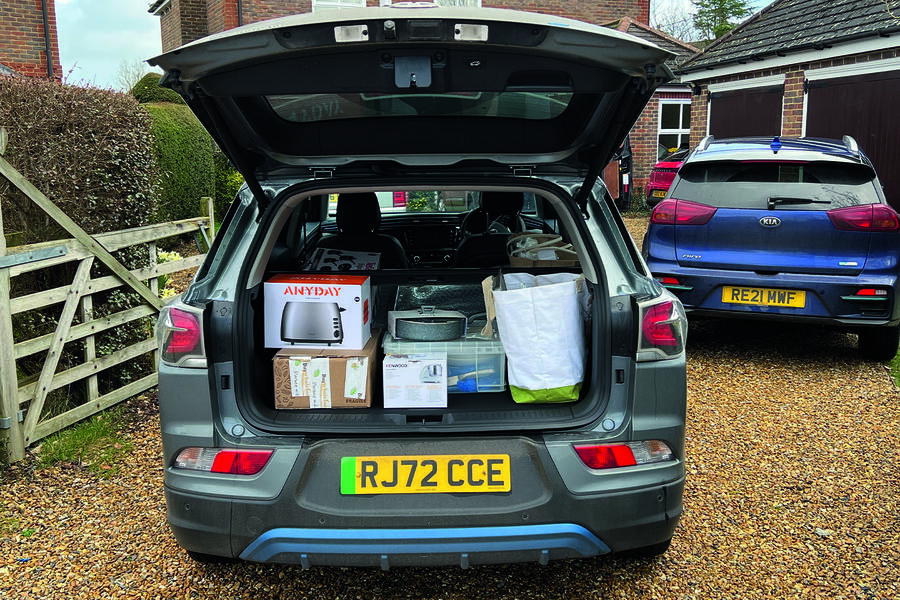
The Korando has been packed with everything I own, and the big move to London is upon me. There is more than 1200 litres of cargo space in play with the rear seats lowered. However, they don’t fold flat and a few gaps appear between the seats and the boot space itself, so I had to double-check for any lost items.
Welcoming the Korando to the fleet - 5 April 2023
Where to start with Ssangyong? After several name changes, near-death experiences and financial takeovers during its 68-year existence, the Korean SUV specialist has yet another new owner. Will the KG Group succeed where Daewoo, SAIC and Mahindra failed? Well, it’s already ringing in major changes, chief among them the brand name, which new boss Kwak Jae-sun says is connected to a “painful image”.
So everyone will have to call Ssangyong ‘KG Mobility’ in future. We will stick with ‘Ssangyong’ over the next three months with its new Korando E-motion, though.
What exactly is the Korando E-motion, then? It’s an electric mid-size SUV, but also a key component of Ssangyong’s future. The Korando name was initially used from 1983 to 2006, then brought back in 2010, and it has come to adorn the firm’s second-best-selling car, behind the smaller Tivoli. The current shape was introduced in 2019 but gained the E-motion variant only last year.
Ssangyong’s first EV, the Korando E-motion is powered by a decent-size battery, at 61.5kWh (55.3kWh of that usable), which officially gives it up to 212 miles of range. A single front-mounted motor produces 187bhp and 265lb ft for a 0-62mph time of 8.5sec. Not the fastest EV around, then, but quick enough for daily driving. And it gives a surprising amount of wheelspin – something that I can’t imagine has been the case with many Ssangyongs before.
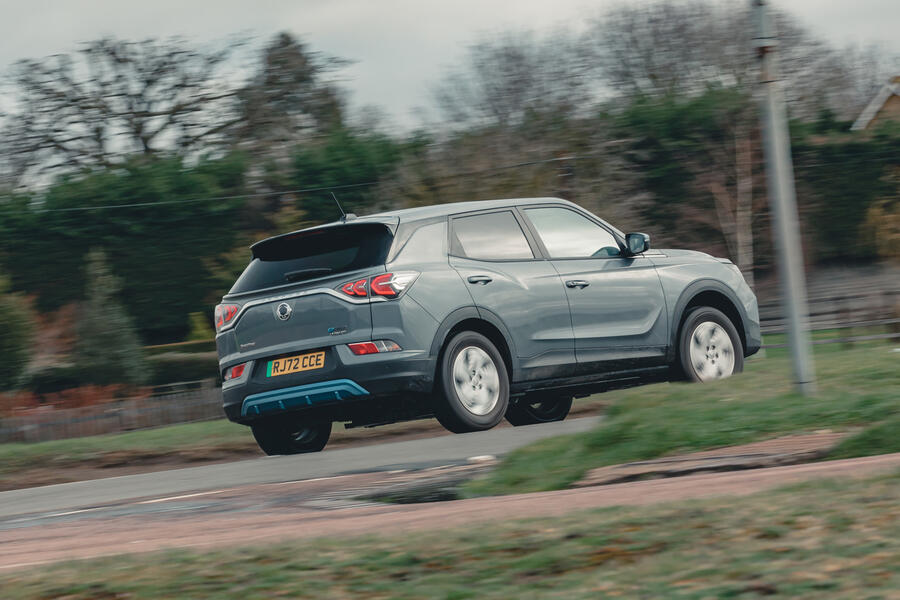
This means I will from now on avoid the most aggressive of the four driving modes, which are named Eco, Eco Plus, Comfort and Sport.
Charging capabilities aren’t spectacular: the Korando E-motion can accept rates of up to 100kW, which should get it from 0-80% in around 33 minutes, and on a 7kW home charger expect an 11-hour charge time from empty to 100%.
Pricing is fairly attractive, starting at £32,695 for VLX trim. That puts the Korando E-motion a smidge above the Mazda MX-30 (from £31,250 but with a dismally short range of 125 miles), although it’s eclipsed by the trio of big-selling affordable electric cars from MG, most troublingly the similarly sized ZS EV crossover.
Equipment is where the Korando excels, though. Even the entry-level car is fitted with automatic wipers, a 12.3in digital instrument display, a reversing camera, dual-zone climate control and cruise control, while mid-range Ventura trim adds LED headlights, heated front seats, a 9.0in touchscreen infotainment system and sat-nav.
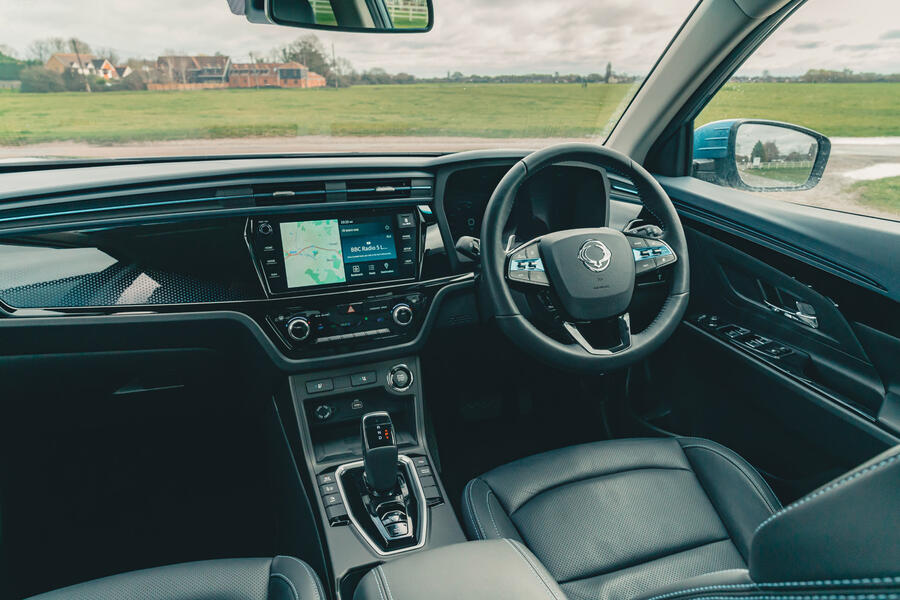
Our car is a range-topping Ultimate, which is priced almost the same as the Volkswagen ID 4 in its most basic form, at £38,695. Yikes: suddenly this Ssangyong doesn’t seem so cheap, after all.
Still, it gets even more standard equipment thrown in, including heated and ventilated front and rear seats with electric adjustment, a powered tailgate, wireless smartphone charging, front and rear parking sensors, privacy glass, a heated steering wheel and a heat pump for improved efficiency.
You might have some concerns about material quality, going by Ssangyong’s value shtick, but everything about this car as far as the interior is concerned right now strikes me as quite impressive.
The driver’s seat, while firm, is endlessly adjustable, while the leather steering wheel feels plush. Soft-touch materials dominate the cabin, with little gloss plastic to be seen. And the dial display is very clear and offers several customisable presentations
What’s more, there isn’t a single touchpad to be found – a relief for this former Volkswagen EV custodian. Instead, everything is controllable via buttons, either on the centre console or on the steering wheel. These even extend to features like the lane-keeping assistance, which can be switched off with one press of a button just to the right behind the wheel, instead of after a trawl through endless menus. The second row is also good enough, with room for three people to sit comfortably. Boot space stands at 551 litres, which roundly beats that of the ZS EV (470) and ID 4 (543).
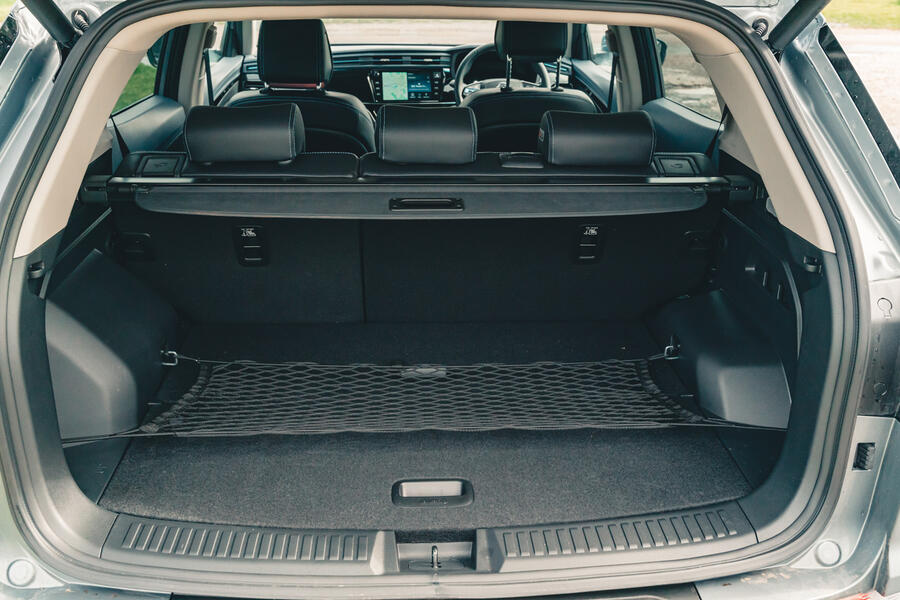
First driving impressions are that the ride is soft and comfortable and that the motor delivers power smoothly enough. It’s not the most dynamic in the corners, but wouldn’t you know the sky is blue? What could prove more of an issue when travelling at higher speeds is the Korando’s drag coefficient of 0.36, rather higher than key EV rivals and something that could harm our chances of getting close to that 212-mile range.
It just so happens that I’m moving from leafy Berkshire to London imminently, so commuting through the suburbs rather than down the M3 might play right into its hands.
Second Opinion
Jack is about to move to the Big Smoke, so it will be interesting to see how he gets on with the Korando in tight city streets. On the one hand, the bonnet’s raised edges and the rear’s square back mean it’s easy to place in a parking spot, but then it’s also a pretty big car and its rear-view camera gets dirty quickly. Carefully does it now…
Piers Ward
Ssangyong Korando E-Motion Ultimate specification
Specs: Price New £38,695 Price as tested £38,695 Options None
Test Data: Engine Front-mounted permanent magnet synchronous motor Power 187bhp Torque 265lb ft Kerb weight 2250kg Top speed 97mph 0-62mph 8.5sec Range 210 miles (WLTP) Economy 3.7mp/kW (claimed) Faults None Expenses None



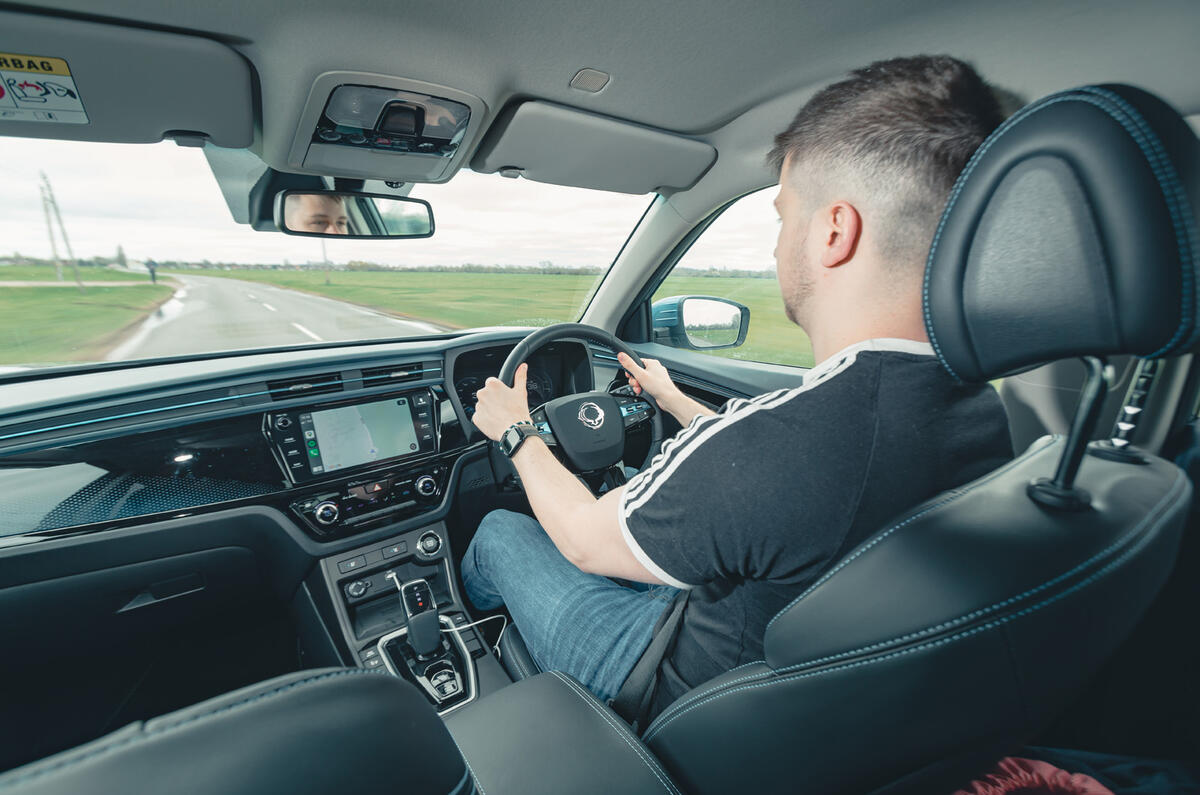


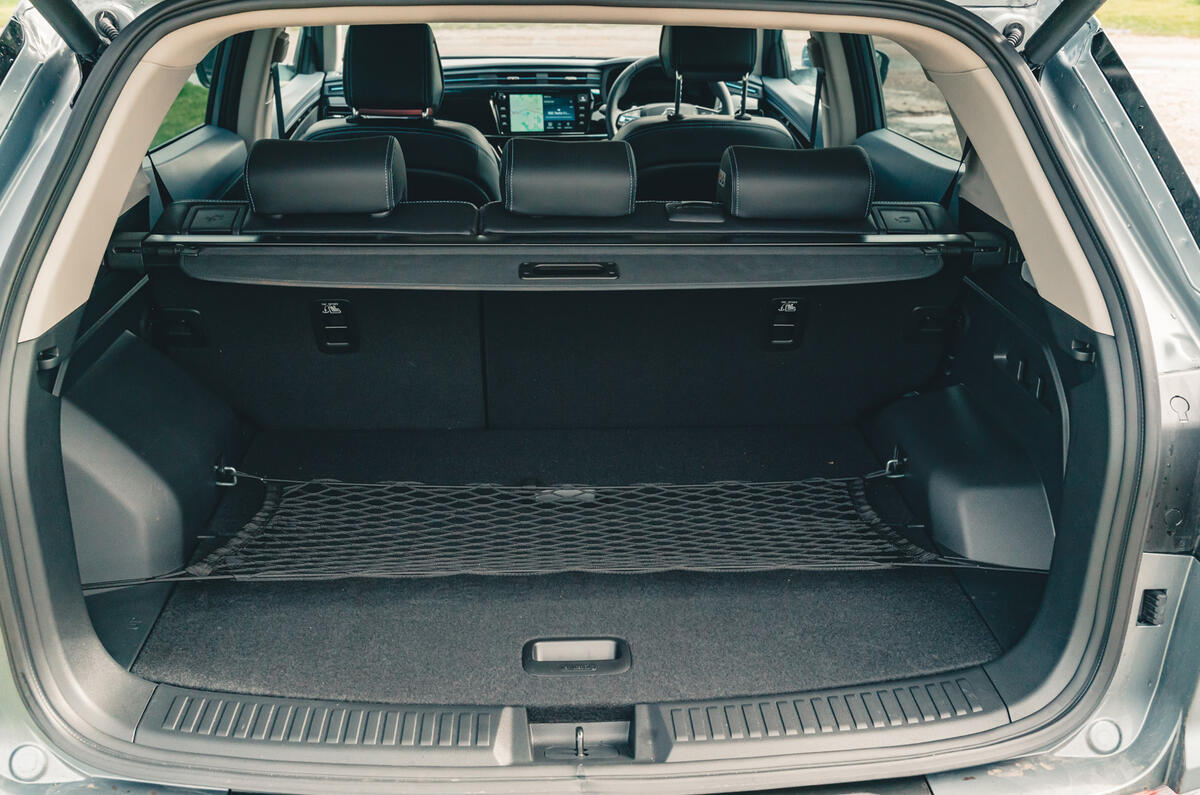

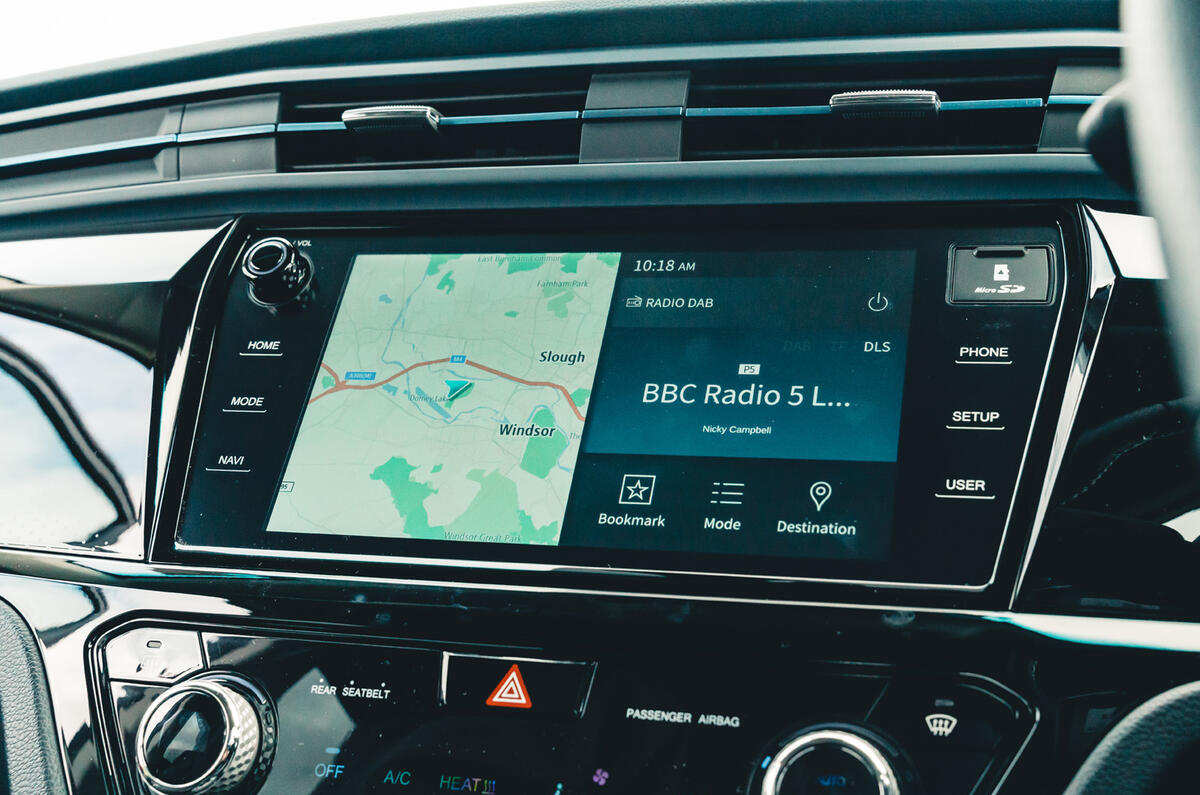
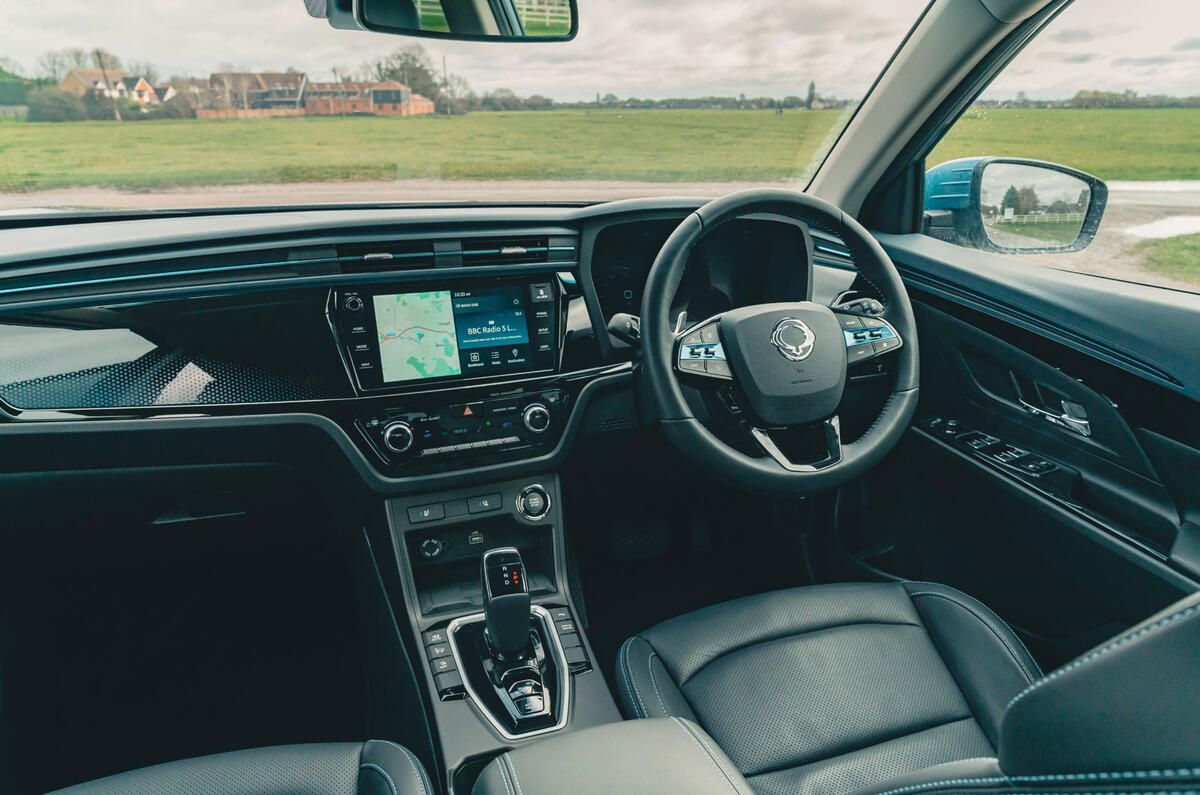
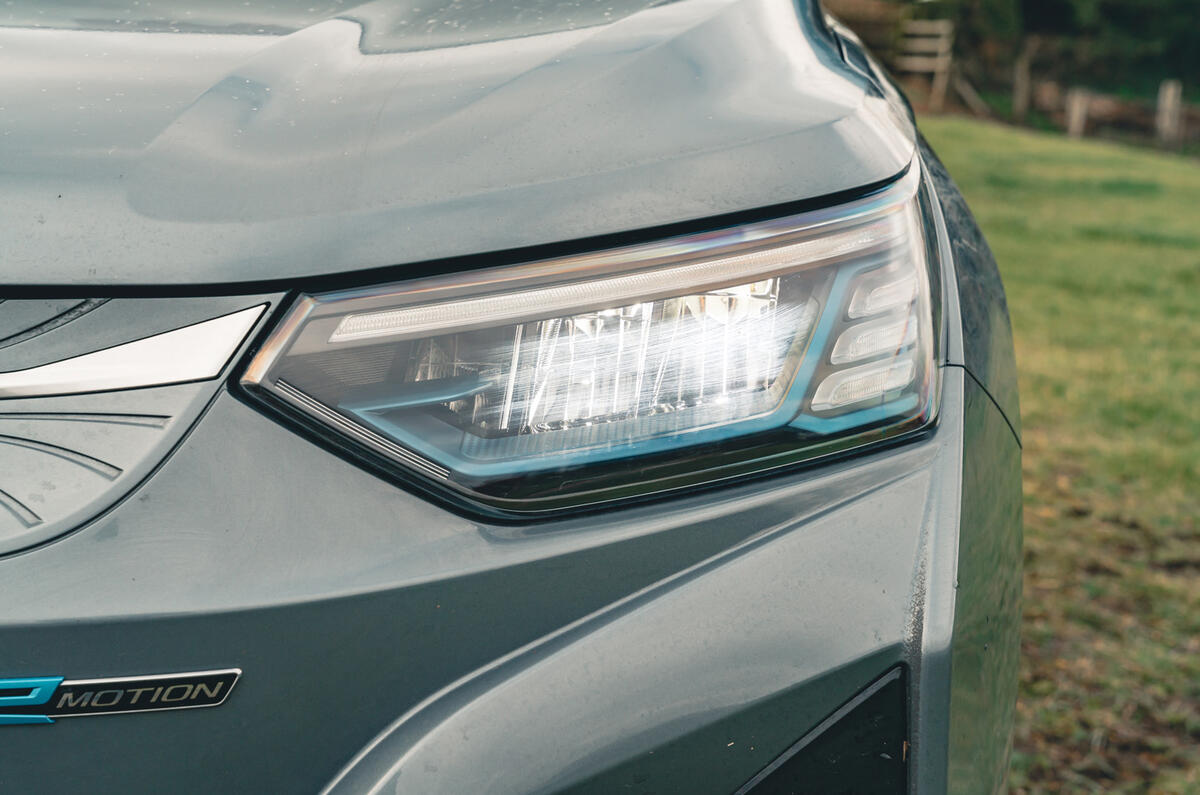
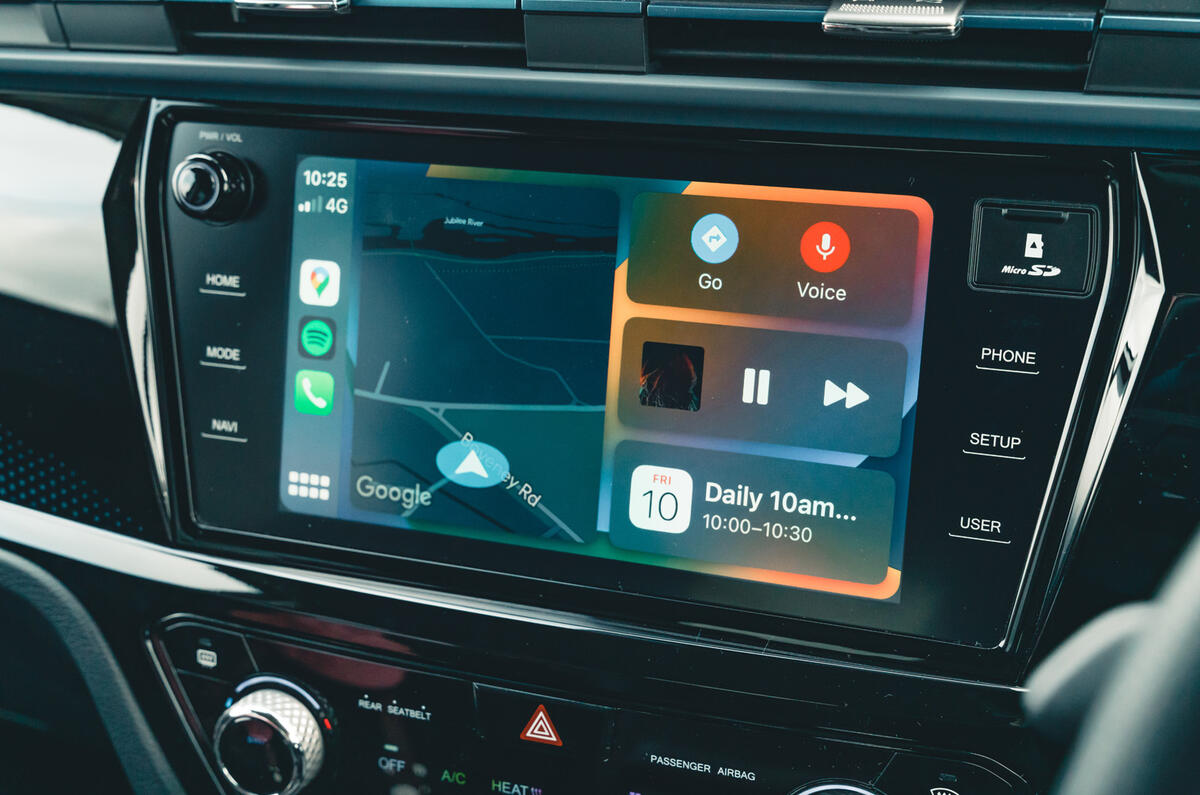





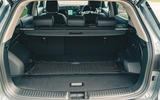
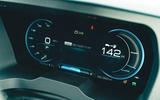


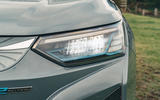



Join the debate
Add your comment
It sounds like many EV drivers aren't a very nice bunch.
And if a young, able bodied man is having problems with the accessibility of chargers and the weight of cables, what must it be like for disabled drivers?